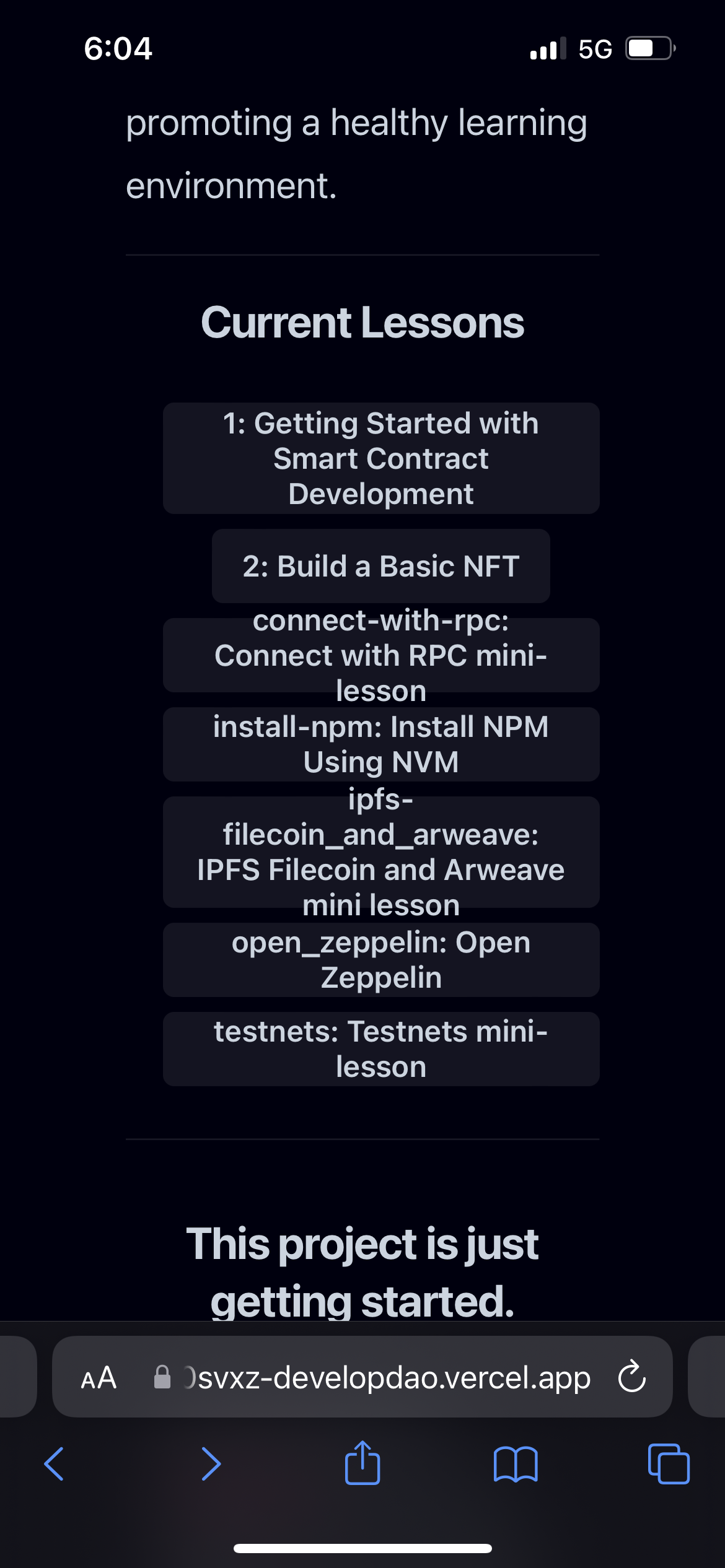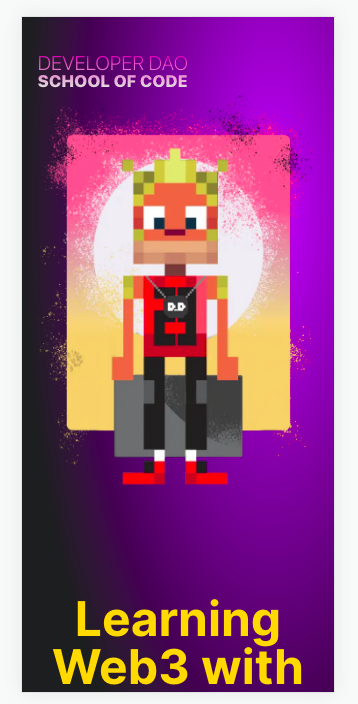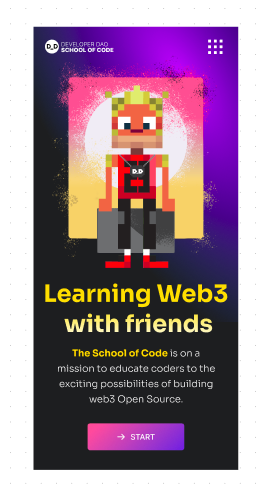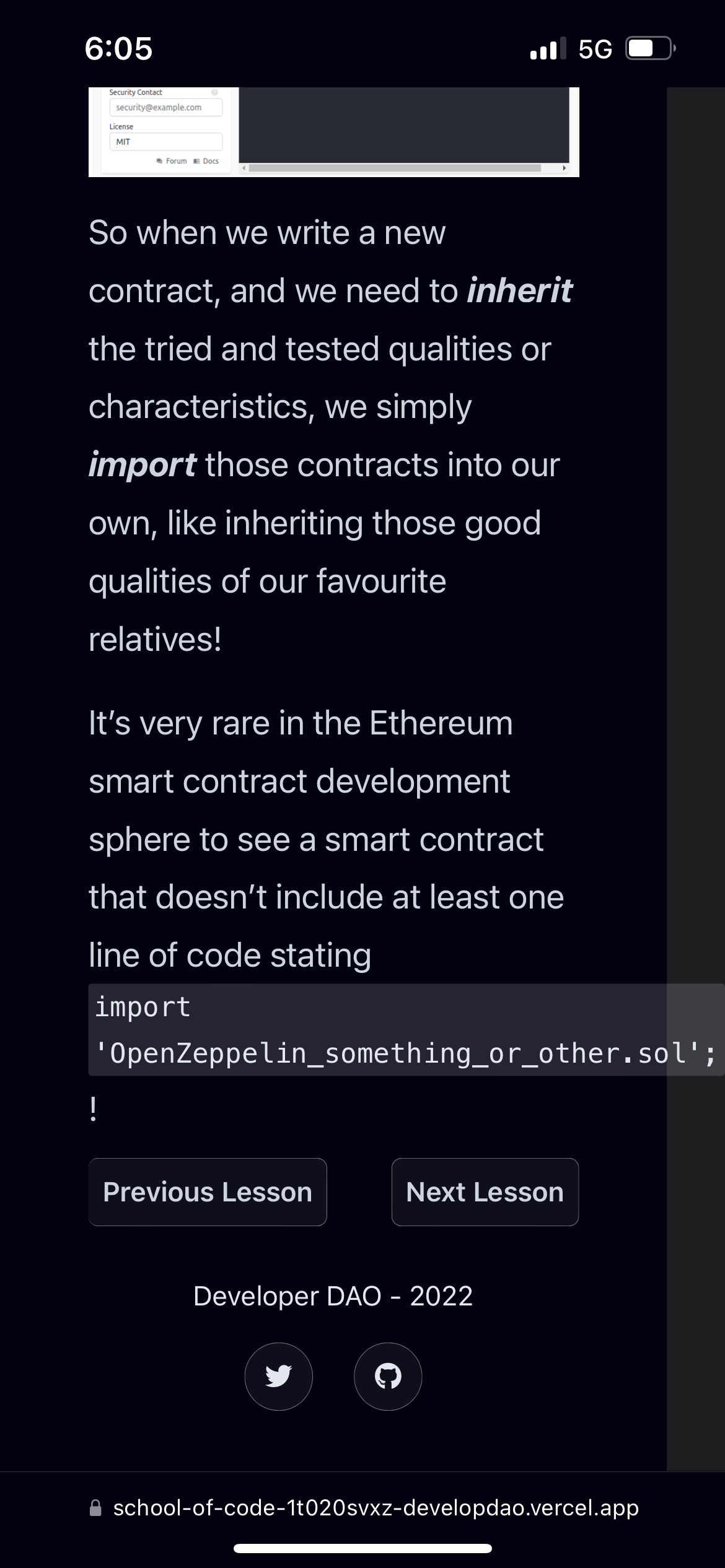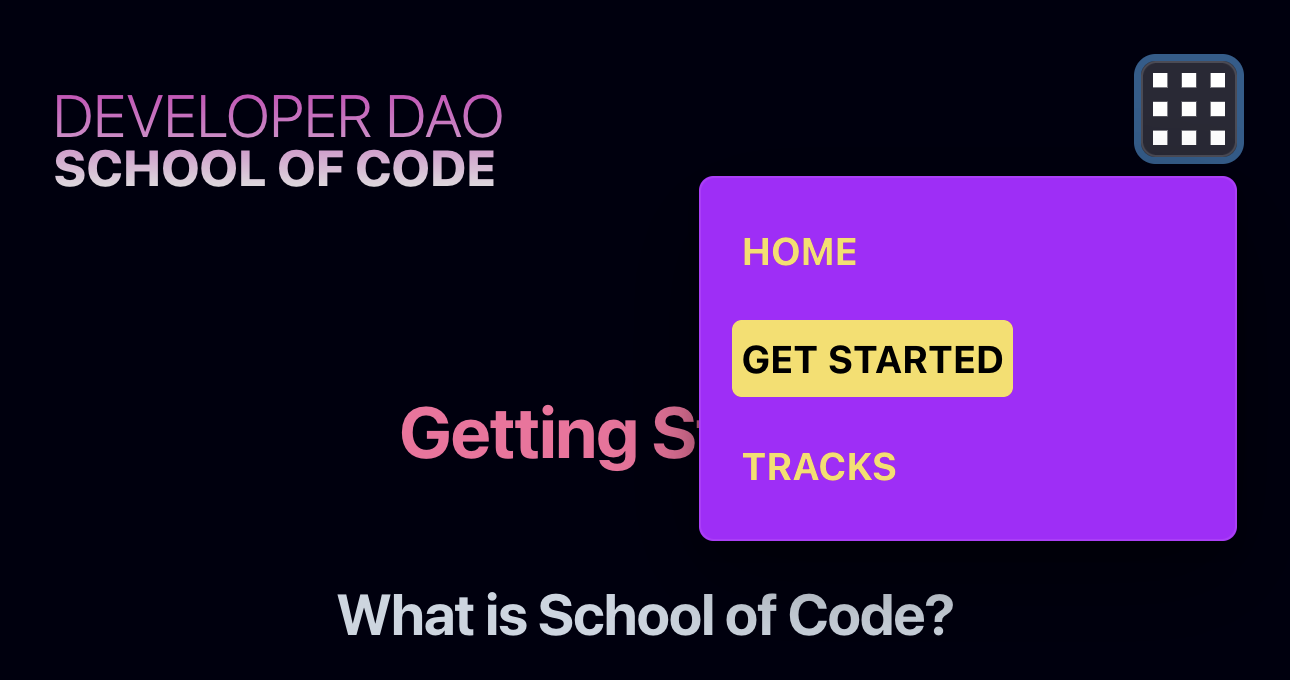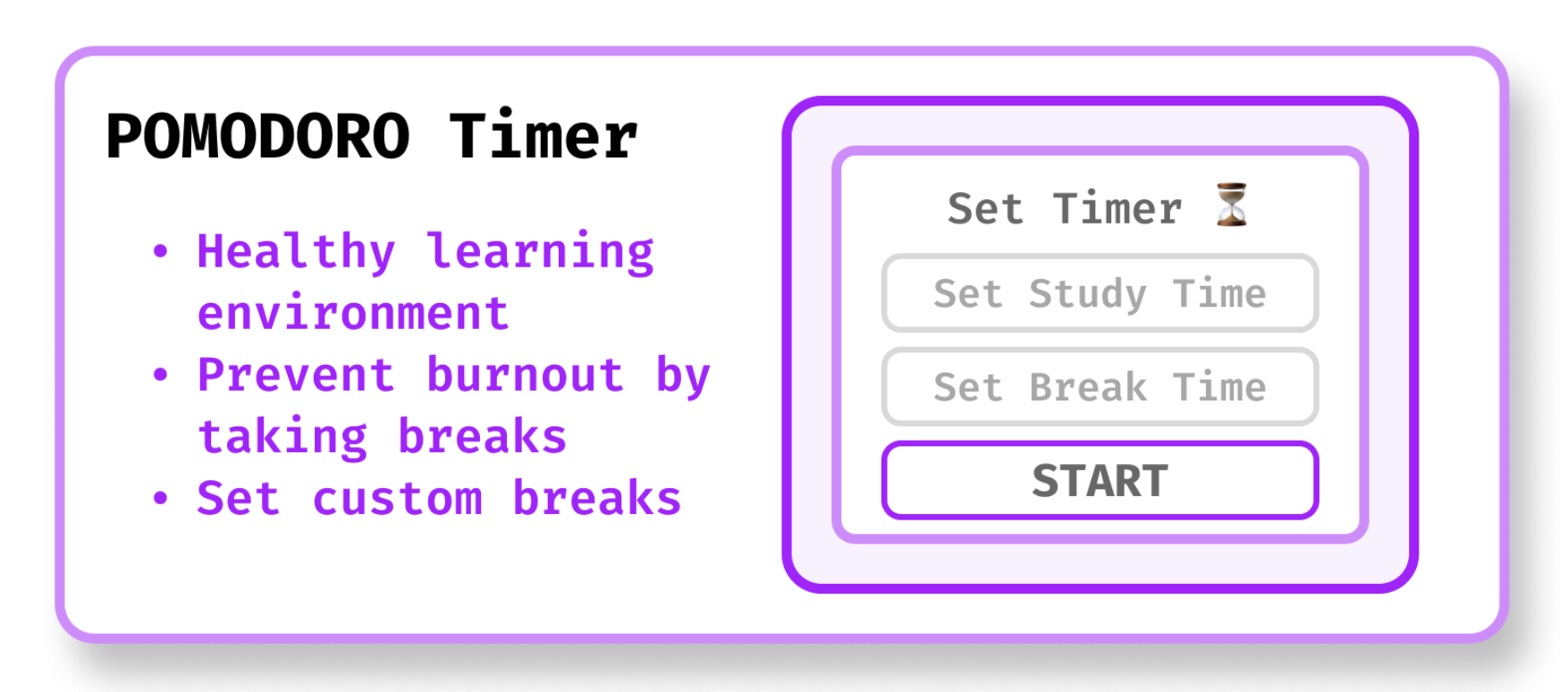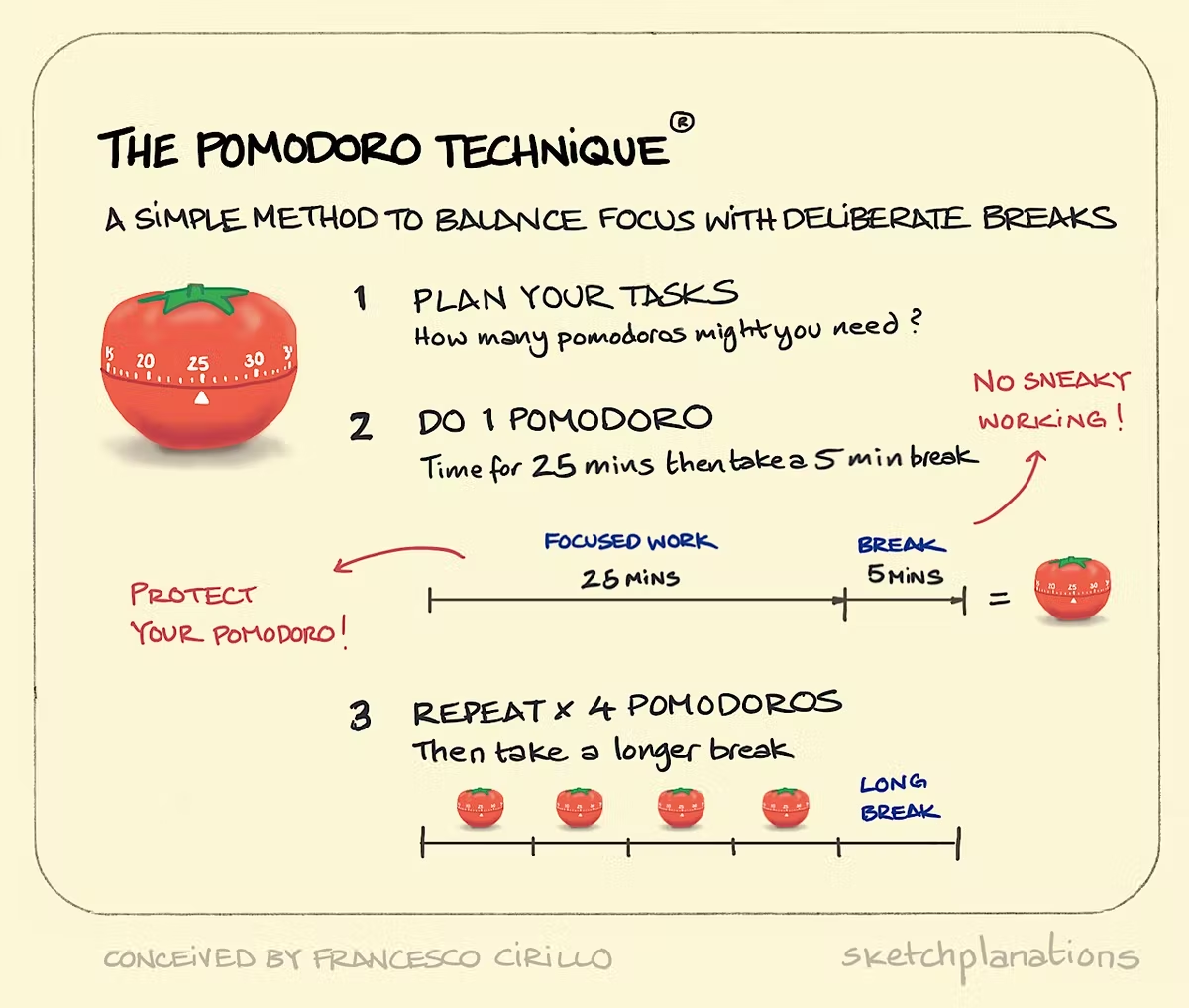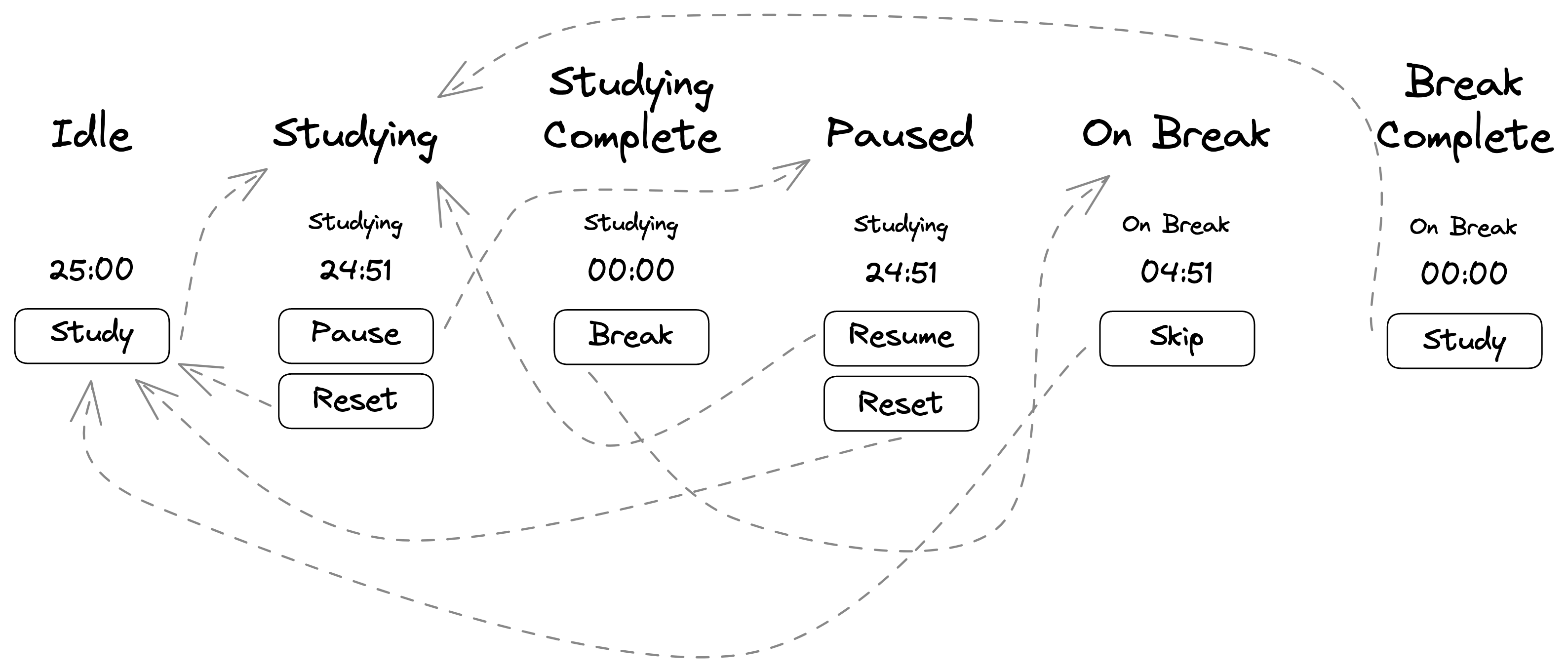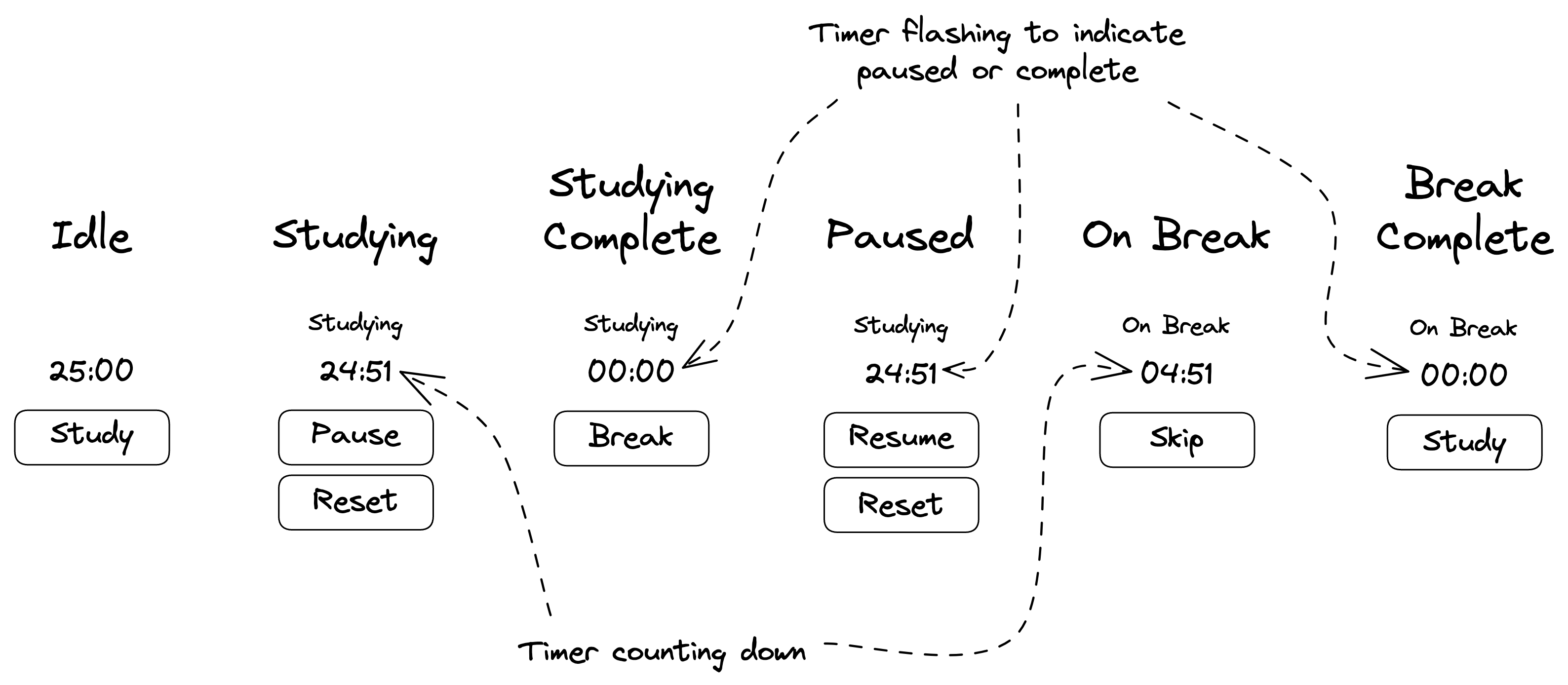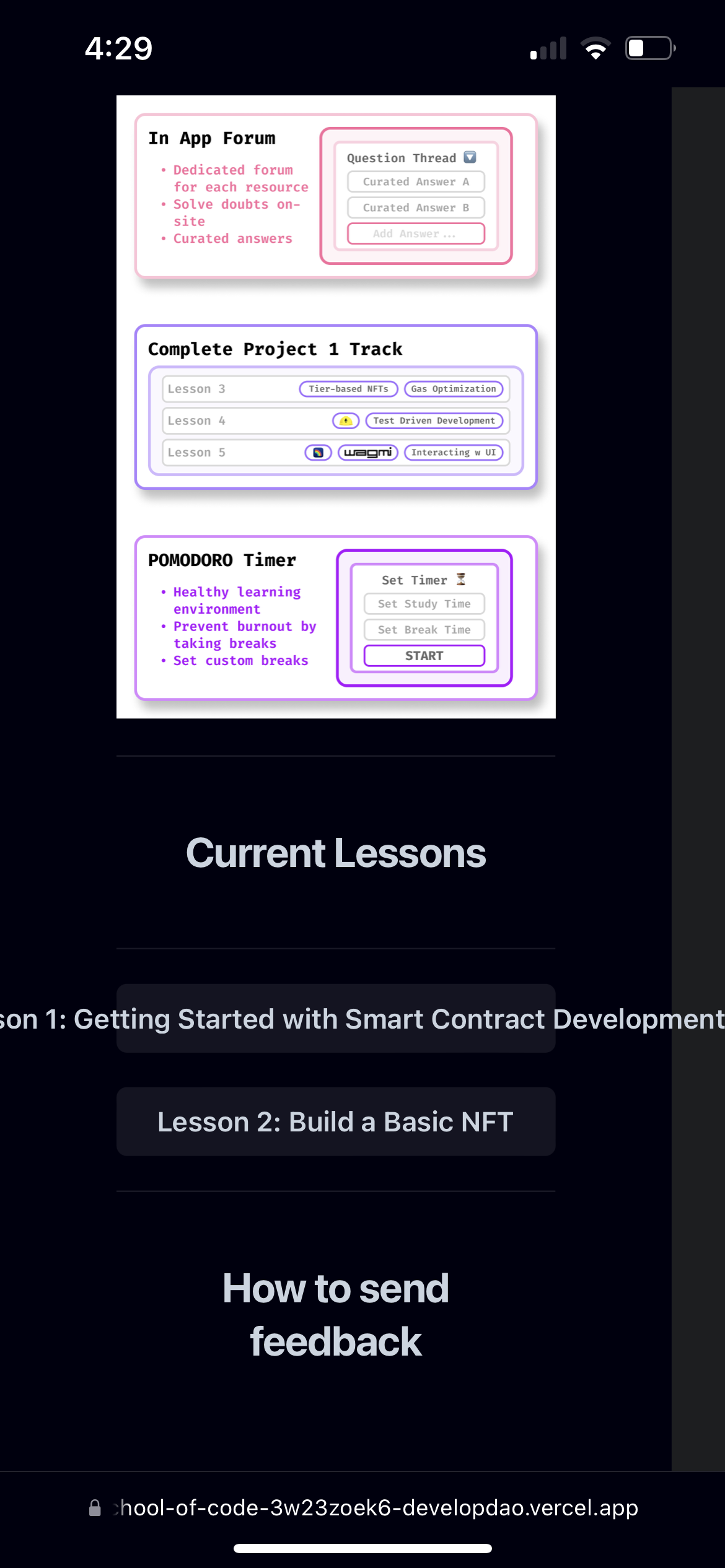Developer DAO Academy is an open-source education platform created by the
Developer DAO Foundation.
Live site is at https://academy.developerdao.com.
Find us on Twitter at https://twitter.com/devdao_academy.
- All Developer DAO Academy website content © 2022 by Developer DAO Foundation licensed under Attribution-NonCommercial 4.0 International.
- Developer DAO Academy website code © 2022 by Developer DAO Foundation licensed under MIT.
Please read our CONTRIBUTING Guide to get started. We ask that you are a member of Developer DAO to contribute, since our project uses various Developer DAO planning and communication tools, such as Discord.
If you're new to the project, see below for setup instructions.
As you're working on code, some things to think about:
- PRs should be as small as possible so they are easy to review
- There are strategies you can use to keep PRs small, even if your feature is big. How to Split Pull Requests – Good Practices, Methods and Git Strategies
- Run
yarn confirmwhich will make sure your files are consistently formatted, lint the code base looking for problems and then actually building the site locally to ensure no build problems - If you see warnings or errors please fix.
- Also, this step runs Prettier so some files may have changed and need to be checked in.
Now you're ready to submit your PR.
Assume no one knows what your PR is about. So helpful to:
- writing a description in the PR to explain what you're fixing/adding and how to test.
- if your work is based on a GitHub issue, add that in the description, though make sure you use the exact words of "Closes #123" since this will automatically close the issue when the PR is merged. Using "this refers to #123" won't do that.
- send a signal that your PR is ready for review, such as asking someone to review your PR
It's also important that people review PRs -- a great learning experience and important for an open-source project.
Some helpful things when reviewing PRs:
- ALWAYS download and run the code you're reviewing. Never eyeball it in the PR and approve it.
- when you review a PR, please add yourself as a reviewer in GitHub so we know someone is reviewing
- go through the formal GitHub review process of starting a review and then finishing with "approved" or "needs changes"
Once a PR is reviewed, the author of the PR should merge, and the author should run through the live site and make sure the code is performing as expected.
Prerequisites:
node --version 18.x
Refer to the node and npm installation with nvm guide in Lesson 2. A link
to the guide can be found
here:
Fork this repo, clone forked repo locally and cd into the repo:
git clone https://github.com/[YOUR GITHUB HANDLE HERE]/academy.git
cd academy/
Installation and run:
yarn install
yarn dev
This will create a local instance of the app running and can be viewed at
http://localhost:3000 in your browser.
Also it's handy to install the Prettier plugin for your browser. You can then use it to automatically format files. It helps keep the code base tidy, for Typescript, MDX and Markdown files.
VSCode Remote Containers (alternative setup)
If you use VSCode for development, we already have the configuration files for you to use Remote Containers (make sure that you check the link to install the requirements to use it) to easily create an isolated development environment for your fork. After installing the minimum requirements, you can start using it following this quickstart.
For Windows Users
You may run into setup problems if using Windows Powershell. We suggest you use WSL.
Since this is a work in progress, your local version of the app can be updated with the following commands:
Stop the locally running app with:
Ctrl + C
Use git pull for the most up-to-date version:
git pull
Reinstall with yarn:
yarn install
Run the updated app:
yarn dev
To learn more about Next.js, take a look at the following resources:
- Next.js Documentation - learn about Next.js features and API.
- Learn Next.js - an interactive Next.js tutorial.
You can check out the Next.js GitHub repository - your feedback and contributions are welcome!
This project uses Storybook. Storybook allows us to develop components in isolation from our app.
Stories are loaded from *.stories.(mdx|js|jsx|ts|tsx) files in any directory.
To use Storybook, run the storybook script:
yarn storybookTo learn more about how to write Storybook stories, check out the official Intro to Storybook tutorial.
The easiest way to deploy your Next.js app is to use the Vercel Platform from the creators of Next.js.
Check out our Next.js deployment documentation for more details.
First make sure you add your information to ./data/contributors.ts. Minimally
you need a unique handle (a single lowercase name such as brianfive) which
will be used to look up your information.
Then add a component in your .mdx file at the bottom like this, using various
handles defined above.
You can add a contributor as an author, reviewer of contributor. Author(s) wrote the content, Reviewer(s) edited the content, and Contributor(s) later made updates or fixed issues.
import { ContributorFooter } from "../../../components/mdx/ContributorFooter";<ContributorFooter
authors={["brianfive"]}
reviewers={["piablo", "georgemac510"]}
contributors={[]}
/>Make sure the <LessonHeader /> component has the discussionUrl attribute
like this:
<LessonHeader
title="Lesson 4: Testing your TierNFT"
discussionUrl="https://developerdao.peeranha.io/discussions/1372/testing-solidity-contracts"
/>Without discussionUrl the link will default to the home page of Peeranha.


